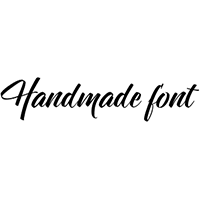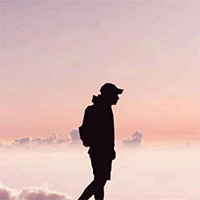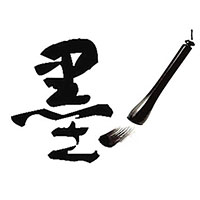ScreenFonts: Precious, Pirate Radio, The Messenger, Women In Trouble, The Road

The problem with being that late with the previous episode of ScreenFonts is that the new one was bound to be equally delayed as well, especially since I had meetings in Berlin, a presentation at PHL University College, and of course the holiday season interfere with my writing schedule. These pieces don't write themselves; they take a long time to gestate. They're worth it though, and judging from the tweets and links they generate I have the impression many appreciate them. Yet nothing could have prepared me for this übercool description by Josh Clement, a first year graphic design student studying in Melbourne:
ScreenFonts, a blatant tactic to drive more customers to FontShop, is actually some of the best reading you can do out of the library concerning contemporary graphic design. Get learned.
A blatant tactic to drive more customers to FontShop? Say what you want, but I gotta make a living, you know. I dislike working in a pizzeria as much as the next guy. ; ) Made me blush though; I am not worthy. Plus now I feel like I have to meet those high expectations month after month. Argh, the pressure!
Heh, I'm not even sure why I included the movie poster for The Fourth Kind. Whenever I hear or read something about contact with aliens or alien abductions I can't help but think of that splendid opening page to "Weirdos From Another Planet", the fourth collection of Bill Watterson's revolutionary comic strip Calvin and Hobbes. As they look in disgust at a chopped off tree surrounded by discarded trash, Clavin says the immortal words: "Sometimes I think the surest sign that intelligent life exists elsewhere in the universe is that none of it has tried to contact us."
But back to the poster – I think what appeals to me is the eerie blue glow and luminous letters. They remind me of an old Photoshop trick I once devised. Maybe I should finally get to translating that one for The FontFeed. The typeface used is the less common Orator, a typewriter sans from the sixties that exists in a small caps version and one with a lowercase in 10 Pitch and 15 Pitch. Not to be confused with the wide bracketed serif face from Mecanorma.
Oh, but wait – isn't what I'm doing now exactly what Josh Clement meant?
Now on to some serious stuff. 2009 Sundance Film Festival winner Precious comes with not one, but four very diverse posters, one of which is rather forgettable. What I suspect to be the main poster is a powerful painting in basic red, white and black, painted in bold brush strokes. The towering silhouette gives brilliant voice to the oppression, frustration and despair of the main character, and the absence of any facial features poignantly portrays her social and emotional isolation.
The treatment of the movie title beautifully demonstrates the power of scale in typography. The tiny silver pendant spells "Precious" in an equally precious script face, yet its position in the big red area, in the dead centre of the poster, lends it far more impact than any big and brash bold type treatment might have had. Before you realise it, it sucks you right in and grabs you by the throat. Or how context can turn something so delicate into a potent (typo)graphic device.
My wife keeps telling me that the birth of our youngest daughter Nona five years ago subtly changed me, making me more empathic and sensitive, and sometimes I'm inclined to believe her. Case in point – I was genuinely moved by this alternate design for Precious. In this poster her bulky frame is outfitted with ethereal butterfly wings and a crown floating over her head in ever so pale yellow, suggesting inner beauty and a potential waiting to be realised.
The movie title set in all lowercase New Century Schoolbook is spaced out a little too much to my taste, but its slightly watered down orange hue harmonises well with the butterfly wings and the high-contrast, almost monochrome picture of the female lead. This version also made me realise all three posters have a strict centred structure, which makes them very static, but actually it suits the subject and benefits their design.
I'm really torn about this February and September episodes, and frankly I'm starting to get a bit bored with their incessant references. How ironic can you get; how clever do you want to pretend to be?
U P D A T E
Whoa, I didn't see this one coming. Shortly after publishing this post I received an e-mail in my inbox from one of our FontFeed readers.

I fear that the Saul Bass inspired Precious poster is more than just an homage – I would go as far as to call it plagiarism. Although it is a stunning piece of art, it's a complete rip off of Lanny Sommese's 1987 Rape Line poster. What makes it more egregious is that the movie deals with rape, and the designers crassly stole the poster for commercial purposes. These are the same designers that did The Men Who Stare At Goats that you mention later in your article.
From homage to (unintentional?) plagiarism – the movie poster for The Box does look a hell of a lot like the poster for From Hell, the Hughes brothers' film adaptation of the multi-award winning comic book series by Alan Moore and Eddie Campbell. The black background, the bright red streak of blood running vertically across the image, the menacing figure at the bottom … It's almost identical, down to the movie title set in all caps Neue Helvetica Extended, the first word in a very light weight, and the second one in a very bold one. Quite unfortunate.
Same goes for the movie poster for The Men Who Stare At Goats. The red and yellow colour scheme, the silhouettes at the bottom of the poster, the angular hand-cut type, … it all looks a hell of a lot like the poster for that other George Clooney movie Burn After reading. Talk about déjà vu – even this whole paragraph sounds almost identical to the previous one!

The people who composited the images for the teaser posters apparently have problems with English grammar, more specifically with prepositions. They must have misunderstood the title of the movie – set in an unknown stencil version of Helvetica in these designs – because Jeff Bridges clearly stares over a goat, and both Ewan McGregor and Kevin Spacey stare past their goats. The only one who barely manages to stare at the goat (well, in the general direction of the goat's eyes) is George Clooney.
Obviously somebody didn't think this through, and now the movie industry have painted themselves into a corner. The former (literally) high point in their frantic bidding war to have the most ominous and threatening promotional image for an epic disaster movie was the tidal wave engulfing New York City – yup, Hollywood really has a beef with the Big Apple. Yet the movie poster for 2012 (also literally) tops it all. I mean, a tidal wave as high as the friggin' Himalaya! The problem of course is: where the heck do we go from here? What options are left for the next movie in this genre? A tidal wave that hits the friggin' moon!? They clearly don't realise what problem they have created for themselves.
As for the movie logo – disaster movie? Check. Square sans serif? Check. A wide square sans serif? No, so it's not Bank Gothic. A narrow design? Indeed, it's Agency. At least there are some certainties in life.
Now this is a shame. This US version of the poster for Pirate Radio appears to have fallen victim to the McDonaldisation of American cinema. Not only was the movie title changed from the witty double entendre The Boat That Rocked to the more "snappy" but alas rather unimaginative Pirate Radio, the typography was also adapted to the utterly unimaginative Futura.
And it doesn't stop there. Somehow, at some point, some marketing bozo must've noticed that the four actors walking the plank look, like, you know, quite mature. So they added the two young'uns to make the poster more palatable to a younger and hipper movie-going crowd. While they were at it, they also threw in a boat with even more foxy little minxes and hot young bucks partying like there's no tomorrow – instant appeal. And hey presto, let's stick some neat lightning bolts on the "I" to make it look like a totally unconvincing and misshapen radio tower. Rad!

No, give me the original collaterals any time. The British poster is much more classy, well balanced with less clutter, and cleverly references the legendary The Beatles' Abbey Road album cover, one of the most famous and most imitated album covers in recording history. Although Let It Be was released later, Abbey Road is the the final album recorded by the band before its dissolution. In a bizarre twist the actors walking the plank into oblivion strangely mirror the image of The Beatles, which could be interpreted as them literally walking away from their shared history.
I also really like the teaser posters. The simplicity and candy coloured backgrounds makes the character posters shine, and the multi-character teaser posters bustle with energy and joy. typographic anachronism on the poster, as the movie is set in the sixties. It's all in the details, baybee.
Oooh, how I like this one! The poster for The Messenger fires on all cylinders. It works wonderfully well, both as a movie poster and a piece of graphic design. The contrast of the posterised picture of the two leading actors is subdued by the grey base colour. Together with the greenish beige of the type and border, and the gorgeous dark red band underneath the movie title, it turns the design into a brooding and suitably moody composition. The subtle play with transparency – the vertical lines in the image and type, and the red band – adds a gorgeous, sophisticated layered effect without making the overall appearance too gritty.
The typography is the icing on the cake. Much as I like and champion new type, I can't help but admit the choice of the timeless classic News Gothic is just perfect. Could it have been better with a contemporary face? The point is moot, as this simply looks fabulous. Plus it is exquisitely set – the all caps, ragged right composition of actor's names, movie title, and credits, their relative size, spacing, and leading, and their position in relation to the other image elements are flawless. Notice how tastefully and accurately the Film Festival mentions and critic's quote are integrated in the dark area of Ben Foster's uniform. Plus that reversed stars'n'stripes substituting for the first "E" in "Messenger" really brings the whole piece home. I'm in graphic design heaven.
The contrast with the previous poster couldn't be more brutal. Women In Trouble has a movie poster that achieves that nigh impossible feat – featuring scantily clad beautiful women without turning into a demeaning or exploitive piece. In addition to the self-confident yet coquettish pose and come-hither expression of the women in the pictures, I think the cropping and the interesting waterfall composition of the images on a grid play a definite role in keeping the poster light-hearted and fun. There may be a little too much Photoshopping of the pictures, but I'll let that one slide for once.
Again, the type is instrumental in the design's success. The different hues of pink, mirrored in the images, nicely contrast with the simple black background, and lend the poster a breezy playfulness. This playfulness is enhanced by the use of Cabernet, a swashy interpretation of Caslon Graphique / Caslon Black used for the credits and tagline. The choice of type refers to the seventies, a period where the public image of sexuality and eroticism had freed itself from the shackles of narrow-mindedness and wasn't yet burdened with the scourge of AIDS. Even the swash on the "u" in "Trouble" pushing away the tiny type at the bottom adds to the fun. All the type matter is well positioned, using the images as anchors and reinforcing the overall structure of the poster. Another one for the win column.
Which brings me to the mind-boggling question – what the hell is this alternate poster all about? Again a "clever reference", or merely a hapless rip-off of the cover for the DVD release of the 1966 movie Howard? Can somebody please help me out?
The last movie poster in this episode is a rather generic blockbuster design. I must say I am grateful The Road didn't resort to Trajan, but opted for the chunky
Clarendon. Although it seems like Trajan is getting competition from another typeface for making movie posters "feel like Oscar material". More in the next episode …


































 闽公网安备35010202000240号
闽公网安备35010202000240号